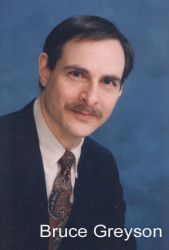Keynote Presentation: Bruce Greyson, PhD
Sometimes a Cigar Is Just a Cigar
Abstract:
Ever since the ascendance of psychodynamic theories a century ago, skeptical psychologists have interpreted spiritual experience as a neurotic defense against life’s vicissitudes and the fear of death. With the ascendance of neurocognitive psychology in recent decades, skeptical neuroscientists have reinterpreted spiritual experience as a hallucination produced by the brain. While both those interpretations are plausible, research data demonstrate that the majority of spiritual experiences differ markedly from either neurotic defenses or brain-based hallucinations. It is of course possible to use spiritual experiences as psychological defenses, and it is possible to have hallucinations that mimic spiritual experiences in superficial ways. In addition, however, I will argue that sometimes a spiritual experience is just a spiritual experience. I will review ways to differentiate spiritual experience from psychological and neurological events with which they may be confused; and I will discuss the importance of distinguishing between spiritual experience and neuropsychological disturbances both to the individual experiencer and to neuroscience.
Presenter Bio
 Bruce Greyson was one of the founding members of the International Association for Near-Death Studies (IANDS), and served for many years on the Board of Directors, as IANDS’ President, Director of Research, and for 25 years, Editor of the Journal of Near-Death Studies. Bruce graduated from Cornell University with a major in psychology, received his medical degree from the SUNY Upstate Medical College, and completed his psychiatric residency at the University of Virginia. He practiced and taught psychiatry at the University of Michigan and the University of Connecticut, where he was Clinical Chief of Psychiatry, before returning to the University of Virginia 18 years ago, where he is now the Carlson Professor of Psychiatry & Neurobehavioral Sciences and Director of the Division of Perceptual Studies. Bruce’s near-death research for the past 35 years has focused on the aftereffects of the experience and on differentiating NDEs from psychopathology, and have resulted in more than 90 presentations to national scientific conferences, more than 150 publications in academic medical and psychological journals, and several research grants and awards.
Bruce Greyson was one of the founding members of the International Association for Near-Death Studies (IANDS), and served for many years on the Board of Directors, as IANDS’ President, Director of Research, and for 25 years, Editor of the Journal of Near-Death Studies. Bruce graduated from Cornell University with a major in psychology, received his medical degree from the SUNY Upstate Medical College, and completed his psychiatric residency at the University of Virginia. He practiced and taught psychiatry at the University of Michigan and the University of Connecticut, where he was Clinical Chief of Psychiatry, before returning to the University of Virginia 18 years ago, where he is now the Carlson Professor of Psychiatry & Neurobehavioral Sciences and Director of the Division of Perceptual Studies. Bruce’s near-death research for the past 35 years has focused on the aftereffects of the experience and on differentiating NDEs from psychopathology, and have resulted in more than 90 presentations to national scientific conferences, more than 150 publications in academic medical and psychological journals, and several research grants and awards.